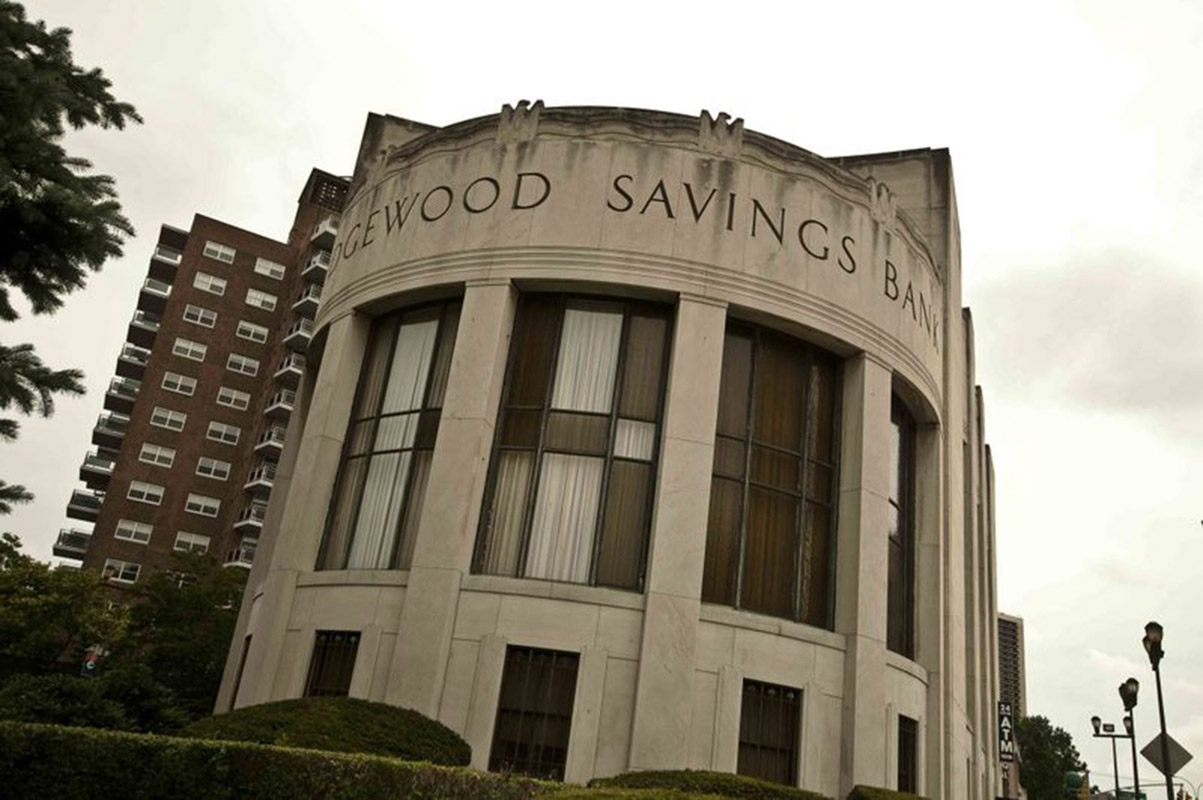New York City is widely known for its Art Deco buildings, but the majority of structures from this architectural era are conglomerated in Manhattan. Engineering feats like the towering Empire State Building in Midtown to Cass Gilbert’s legendary Woolworth Building on 233 Broadway have undoubtably transformed the city into the thriving metropolis it is today. Yet, just a borough away in Queens, another Art Deco building sits on triangular plot of land, right off the Forest Hills–71st Avenue train stop. Framed on three sides by streets, it houses the first branch of the Ridgewood Savings Bank, the largest mutual savings bank in New York State, which currently operates 35 branches across Long Island, Westchester Country and the five boroughs.
The bank had its humble start nearly a century ago, when it was chartered as the “Savings Bank of Ridgewood” on June 18, 1921. Its first office was located in a remodeled taproom at the corner of Myrtle and Forest Avenues until it outgrew the space in 1929. To keep up with the growth, the bank contracted the firm of Halsey, McCormack & Helmer to develop a new, expanded building on the same site, which still continues to serve as its headquarters.
 Large windows of the Ridgewood Savings Bank branch in Forest Hills allow plenty of sunlight to filter through.
Large windows of the Ridgewood Savings Bank branch in Forest Hills allow plenty of sunlight to filter through.
The first branch on 107-55 Queens Boulevard in Forest Hills would not open until 1940. The limestone-clad, three-story building that houses it was also designed by Halsey, McCormack & Helmer, and located on a site chosen for its proximity to public transportation. In addition to its central location, the building’s distinctive, Modern Classical design — a variant of the Art Deco style, which reached its peak popularity in the 1920s and 30s — separates it from nearby structures in the neighborhood. In addition to its large windows, bronze doors and unique window grates, the building features rounded, semicircular ends that are “connected by sides walls with alternating flat and curved panels.” Decorative elements include its central clock face, stylized eagles, vertical piers that resemble Classical columns. Also located above the inscription of the bank’s name is a series of wavy lines with intervening “stone crown” motifs that decorate the roofline.
The Landmarks Preservation Commission notes that the strength of the building’s design “rest in its bold shape and the purity of its materials,” such as bronze, granite and limestone. In 1939, it won the Queens Chamber of Commerce award for excellence in architecture and was designated a New York City Landmark several decades later in 2000. Since its construction, much of the building has remained relatively unchanged aside from the installation of ventilating grates and the addition of two signs for an ATM machine. As Untapped Cities contributor Luke Kingma notes:
“The bank is one of the few historical sites that remains what it always was… a bank. Inside, you’ll still find the old, copper colored teller booths and stained glass windows that you would have found on its grand opening day. It’s one of the few living testaments to Forest Hill’s desire to preserve fully and completely.”
Today, the Ridgewood Savings Bank in Forest Hills continues to stand as a lasting symbol of our city’s architectural legacy.
Next, check out 14 Beautiful Vintage Art Deco Mailboxes in NYC and discover Top 10 Secrets about NYC’s Art Deco Skyscraper 70 Pine.






